We talk a lot about public art around here and how it can be a great marketing tool for your city, both from a tourism standpoint, but also economic development. But one thing important to note is that public art, like any creative product, is subject to copyright protection from the moment the artist’s brush touches the wall’s surface. Are you using murals in marketing and, perhaps accidentally, abusing an artist’s copyright in the process? It’s time to find out.
beauty image mural by Dusty Gilpin
There are many nuances associated with how you repurpose original art and in what capacity—is it used in an editorial fashion or for advertising? that’s the big delineator—but at the end of the day, if you aren’t getting explicit permission, you should start there. Asking the artist and/or photographer for permission to license his/her work is always the first step and will go far in helping you cover your bases.
Thankfully, the Visual Arts Rights Act (VARA) was implemented in 1990 as an extension of the 1976 Copyright Act, giving fine art categories—considered “works of visual art,” being paintings, sculptures, drawings, prints, still photographs produced for exhibition—legal protection. But as far as copyright is concerned when it comes to fair use of murals in imagery and marketing, that’s a trickier subject that seems to baffle many, especially as the sharing of murals continues to flourish on social media.
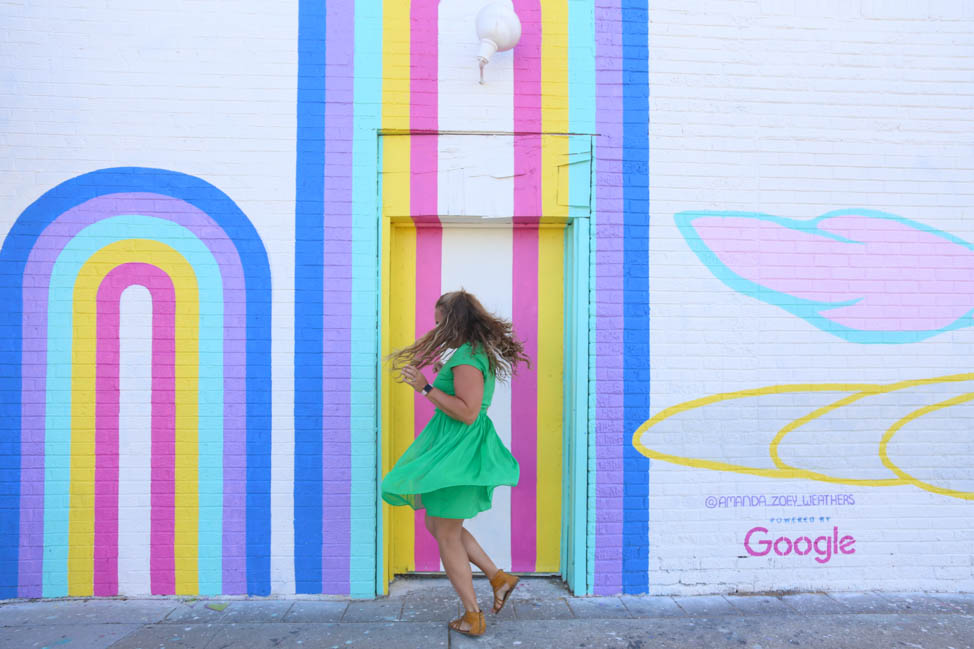
mural by Amanda Zoey Weathers
Since this is a question we’re asked frequently by city government, small business and CVB clients, we went straight to our nonprofit mentor, arts advocate Kris Kanaly, to determine what is kosher and what’s borderline infringement in the public art realm. We know a good deal about copyright protection as it pertains to our own work as journalists and photographers, and while the issue of how intellectual property and murals collide has many similarities, it’s far grayer territory than you might initially think.
Attorney Jeremy Talcott of Pacific Legal Foundation has clued us into how government can’t regulate public art, but what about how the general public can use that mural art once it’s up? Today, we’re discussing how individuals and businesses alike can interact with murals in ways not deemed offensive to the original creator.
Note: While we are not giving any legal advice or legal interpretation of the U.S. Copyright Law in this post, we hope to serve as a resources for individuals and businesses alike to learn how they can better serve artists when using murals in marketing contexts.
The dos and don’ts of posting mural art online
Oklahoma native Kris Kanaly is someone we have admired ever since we first starting visiting Oklahoma City three years ago and someone we are thrilled to call a friend today. On top of having an impressive history in both branding and advertising work, he’s a very skilled visual artist himself and the creator of OKC’s 5,160-square-foot outdoor art gallery, Plaza Walls, which he founded in 2015. We hopped on Zoom last week so he could set the record straight about a few things regarding how we all can (and cannot) use murals in marketing.
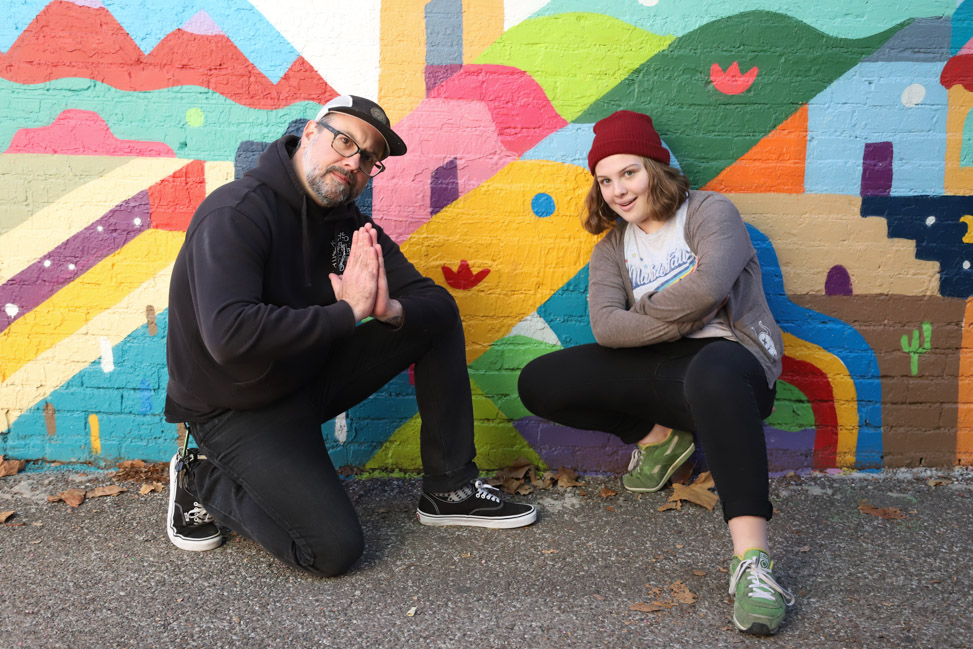
mural by Kris Kanaly
Kristin Luna: People seem very confused about when it’s OK to use a photo of themselves in front of a mural, so give us the nuts and bolts. Say I’m on vacation, I snap a photo in front of a mural and I want to post it—in what context can I use that image?
Kris Kanaly: I definitely want to preface this with the fact that I am not a lawyer, and this is not legal advice. Knowing that, then I’ll start by saying editorial use is OK. You’re educating the public. If you’re a nonprofit, if you’re a magazine writing about the murals, if you’re a teacher using murals in a presentation at a college, if you’re an individual posting on your private social media without profiting, all of that is considered educational and would fall under the category of editorial use.
KL: Which brings me to this: How do you draw the line between editorial and advertising when it comes to social media?
KK: There’s definitely a gray area when people are using it in sponsored ads if you’re an influencer. There’s some buzz that that should be considered advertising, as well.
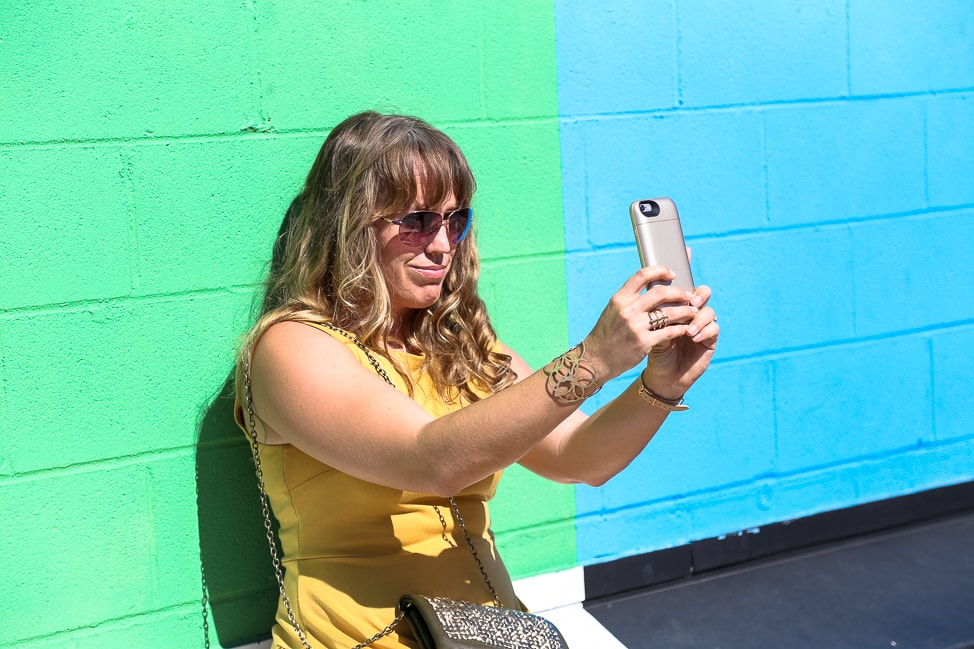
If you’re getting paid for the post and you’re using artwork in the post, there should be a shared usage there, but individuals have a right to share it, post it—as long as they’re not reproducing [the mural] for profit. If they’re using their photography and turning them into a postcard they’re selling with a mural in the background, then you’re in the realm of using someone’s art without consent.
Murals as advertisements vs. editorial
Using murals in an editorial nature—meaning for educational purposes and not for profit—is much more widely-accepted than using murals in a way that would be considered either marketing or advertising. Here is, primarily, how the two purposes differ.
KL: When is an acceptable use of a mural in a marketing nature?
KK: I think each artist has to be the judge on who they think has the right to use their property in any certain scenario. Our general practice for Plaza Walls is that our local businesses in the Plaza District can use our murals in their marketing; we actually love that because they’re small businesses and many of them work with us on a regular basis. A lot of our artists are pretty relaxed with, say, seeing their art in the background of a photo for Empire [Slice House], who has donated every year to our organization. We don’t really have anything official set in place, but we have an understanding: They’re a small business, we’re a community-based project, we kind of feel like we’re all helping to raise this awareness of the district.
As much as legally they would need a license to use it for marketing in their organization, we make allowances and almost encourage it. If an artist does speak up and say “hey, I saw something that I wasn’t really comfortable with that’s part of a company’s brand identity now,” we would help try to mediate between the artist and the organization.
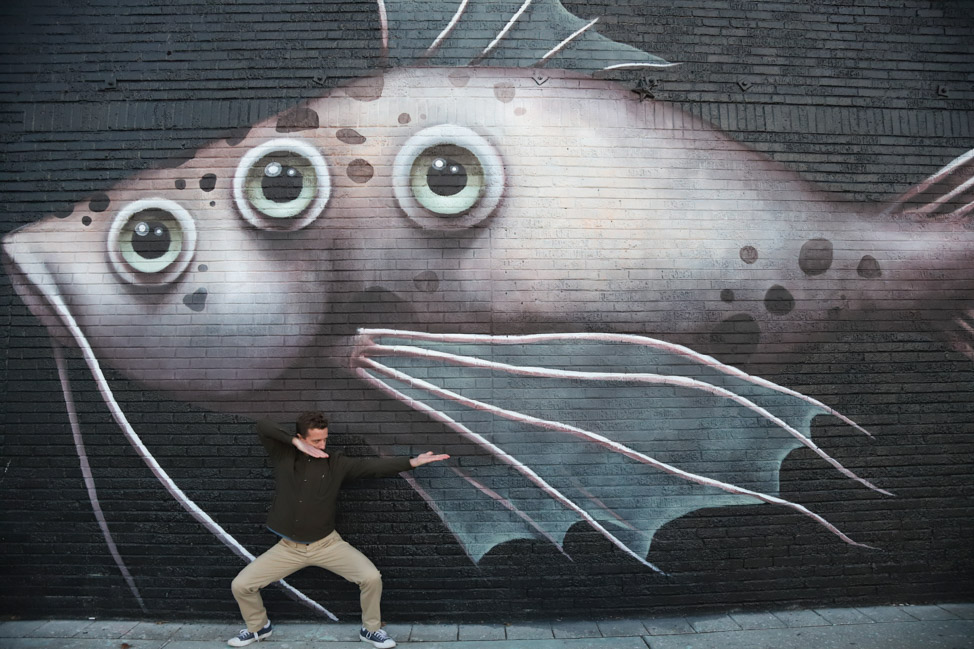
mural by Ana Marietta
Now, on the other hand, we have had larger corporations who are not based in or do not contribute to the district, so we do go after those cases. We act as the mediator where we reach out to the company and say, “hey, you’re using this artist’s artwork, the artist said they never gave you usage rights to use the work in your advertising, and you really need to fix the situation. We can connect you to the artist to resolve this.” Usually people fire back with: “oh, I didn’t know I couldn’t use that.”
Social media has created this realm of “well, what do you mean, it’s a public mural, it’s in a public space, it’s fair use.” We’ve also had people say, “if you don’t want your mural used in public photos and out in a video for a car driving by in a car commercial, then stop painting it where everybody can see it.” And I say, “well, that’s ridiculous, you wouldn’t record a band playing an outdoor concert and then turn around and put that song in a car ad.” It’s not any different, and it’s silly that people don’t view it in the same way.
KL: There’s so much gray in the world of online media. For example, many of these “Instagram models” might not be doing a sponsored post per se, but they’re making affiliate income via LikeToKnowIt (rewardStyle). Does that bother you if they’re posing in front of a piece of yours, so long as they’re tagging and acknowledging it’s your artwork?
KK: Not really. I mean, if it’s a Gucci, Prada or H&M ad, then sure I would definitely say, “this feels like we’re getting into marketing and isn’t a personal post.” I think that influencers should be considered a form of advertising if they’re getting paid to promote a product.
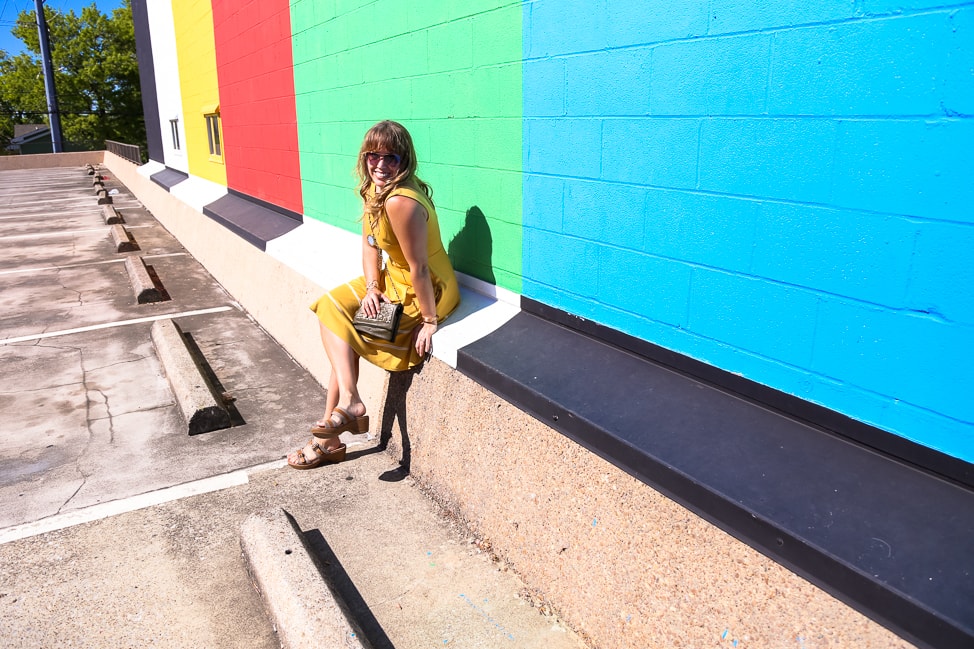
mural by Adrien Saporiti
KL: What’s been the most egregious abuse of one of your murals?
KK: I had a liquor company holding up their bottles in front of my murals, taking photos, then using them for paid Instagram ads. I contacted the owner politely, and he said, “You don’t have the right to say that to me. And then he asked, ‘well, how much are you asking for?'” I told him if he were to purchase a unique image from a stock company with some sort of royalty rights usage, then it would be around $250 off of iStock or a similar company, and then I charged him a $150 administration fee because I’m sick and tired of doing the paperwork [for dealing with these infringements].
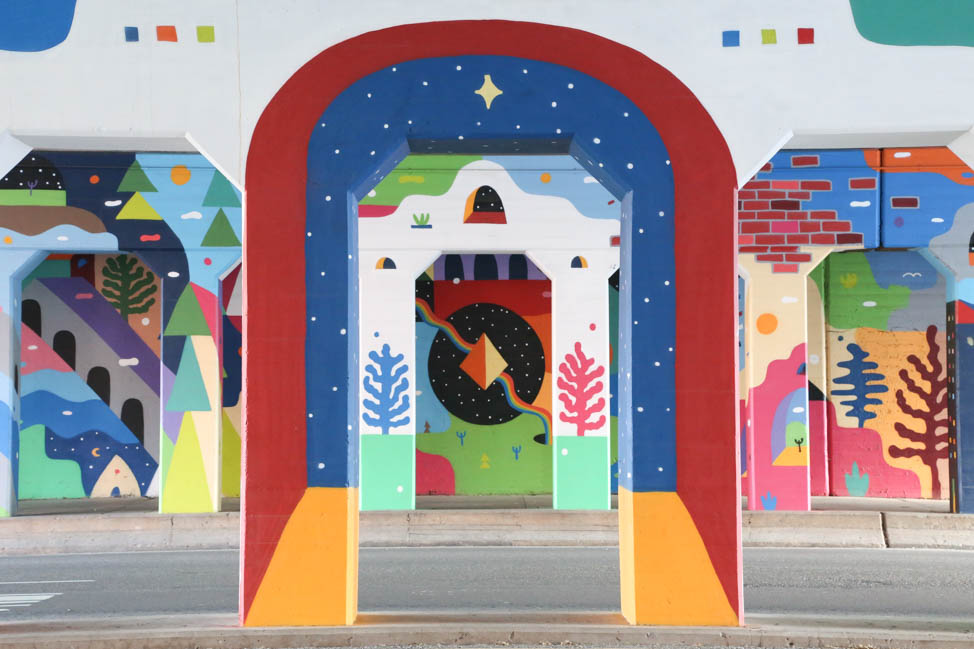
mural by Kris Kanaly
When I called him to talk about, he copped an attitude and said, “you know, you’re lucky I’m even talking to you.” I said, “OK we’re done here,” and I tacked on a late fee, five percent interest for every 15 days he didn’t pay.
KL: A business owner who hires an artist to create a mural on the side of his building—can he use that mural in marketing?
KK: Technically, no. You’ve got to be very careful. If it’s truly an original piece of art and not something that’s been commissioned—i.e. there’s not a paper trail that shows where you asked me to come and paint a logo or an advertisement or, say, a pair of wings—then you need permission to use it. Commissioned pieces are not necessarily considered copyrighted pieces of art whereas if you are hired for an original work of art, that’s where the muralist own the authorship of that original piece. It’s an incredibly gray area—there’s no easy answer.
Anytime I paint a mural these days, I write in the contract of what [the business or building owner] can do with the artwork. Artists need to really get into the practice of having those conversations and getting contracts signed. It’s as simple as putting it in the invoice saying, “I’m selling you X, Y and Z usage rights.” Even if you are selling it outright, it’s still good to educate the public and your client that that’s something they need to be thinking about. As an artist, you want the public to treat you as a professional. The more we can get people thinking about usage rights, the better.
Can city governments use murals for promotion?
We as a nonprofit, being DMA-events, have been subject to this very plight of city governments and other entities who have not financially contributed to our program using our murals for gain without permission or licensing, so I was interested to hear an actual artist’s take. We’ve had some cities swipe our photos of other murals off our website without licensing them and others include the murals we’ve commissioned in RFPs without permission (also a no-no). Here’s what Kris had to say about that.
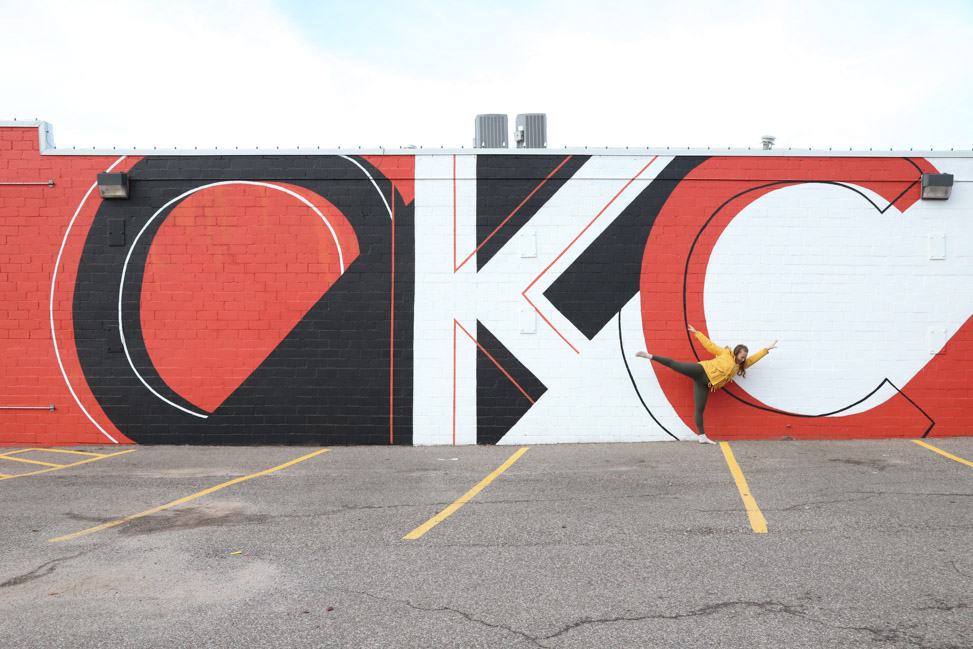
KL: What about city chambers, tourism boards and other DMOs, many of which are non-profits. How do you determine when they are using your imagery for editorial or for marketing purposes?
KK: The way you and Visit OKC have reached out to us to collaborate is perfect—Tabbi calls us up, says she wants to feature us in a piece, we give permission. That’s great; that’s the first step. (Editor’s note: He’s talking about the OKC murals piece we’ve done on the blog and also a cover feature for the CVB’s visitor’s guide.)
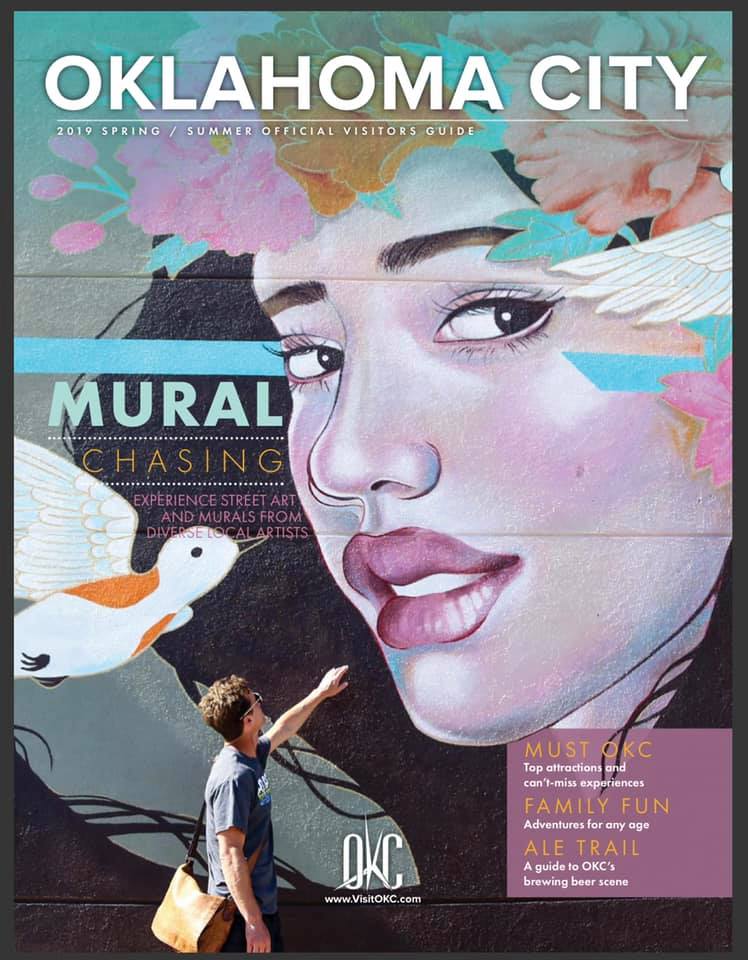
mural by JUURI
But to be a city and just think you can use [murals] carte blanche without permission from the artist or [nonprofit] founders is wrong—as the creator, you feel taken advantage of, like your culture is being appropriated and sold to the masses without permission. We’ve seen spreads where there’s absolutely no mention of any of the artists, and that’s just frustrating. It frustrates everyone involved.
The appropriate first step is just to ask. For example, we wanted to use a soundtrack on a post we were going to boost for Facebook and Instagram, and we reached out to this famous band in LA because we love their music. They told us to go for it because we are a nonprofit and they love the work we’re doing. The first step is always just to ask.
KL: If an artist finds a company or city using his intellectual property without permission or outside of a project scope, what’s the best way to proceed?
KK: We counsel several artists who will come to us and say: “this company used my mural in an Instagram post. It had links in the bio to buy a product. How much should I charge?” I tell them, “well, if you go to a stock website, you can see it costs a hundred bucks to buy a photo to use on social media. But seeing this is very unique, very a rare since it’s an original piece of artwork, I would charge a higher premium. $250 is typically where we start.”
And honestly, if you’re going to sit there and argue this unique piece of artwork should be considered the same value as a stock photo, I’d argue to the contrary. This is an original piece of art; it should be worth more than a typical stock photo. But we start there, that’s what we recommend as a starting point.
For larger infractions or a piece that’s been up for months, you can start to calculate that based on the timeframe.
KL: How would you even be able to calculate damages?
KK: Attributing it to what it was influencing and attributing it to what could be deemed as sales from that particular publication or advertising is where I’d start: by calculating how much money it’s brought in. Those are the things that lawyers are good at. I wouldn’t recommend tackling too much beyond small infractions by yourself. I think larger infractions are resolved more quickly and easily with a lawyer upfront.
KL: Speaking as an artist and not a lawyer, what do you think the best way is for a muralist to protect his intellectual property right out the gate?
KK: Start to copyright your murals after they’re created. While just painting it does give you the copyright, to actually proceed with statutory damages, you’ll need a copyright.
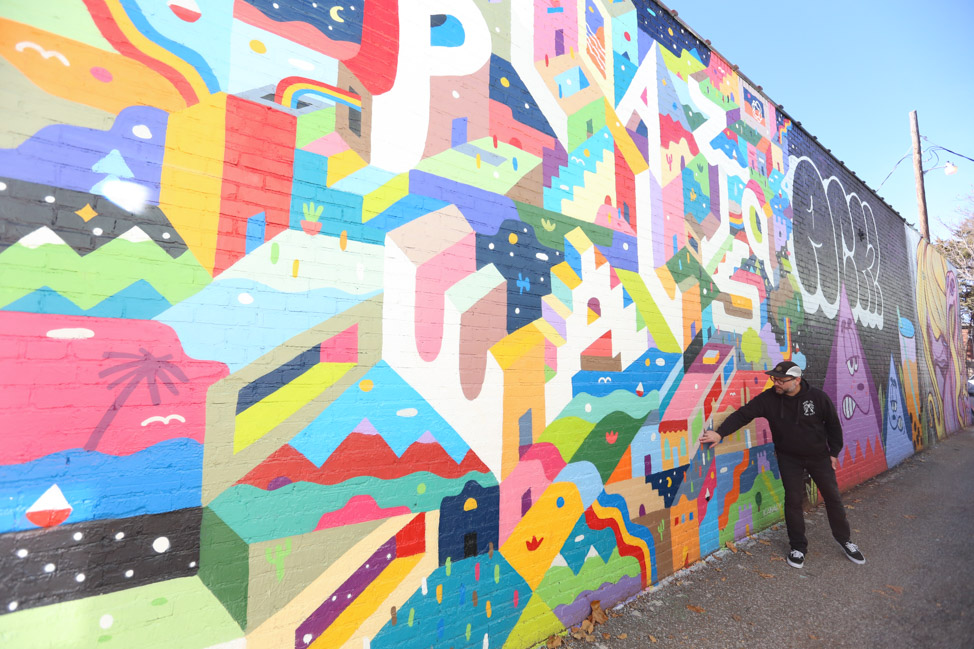
mural by Kris Kanaly
Thanks so much to Kris Kanaly for his great insight! If you have any questions or concerns about if you’re using murals in the right capacity, the best way to make sure you’re in the clear is to simply ask the artist or commissioning body. And if you employ legal counsel, that’s a great way to cover your bases even further.
Here are additional resources and articles about how murals are protected under VARA and the U.S. Constitution:
- Understanding the First Amendment Limitations on Government Regulation of Artwork
- City apologizes after violating First Amendment rights
- Can Government Regulate Art? The Many Nuances of Mural Law
- Artists Assert VARA Rights to Protect Street Art
- A Guide to the Visual Artists Rights Act
- Should Art Fairs Allow Visitors to Instagram Their Favorite Artworks?
PIN IT! SAVE THIS POST FOR LATER
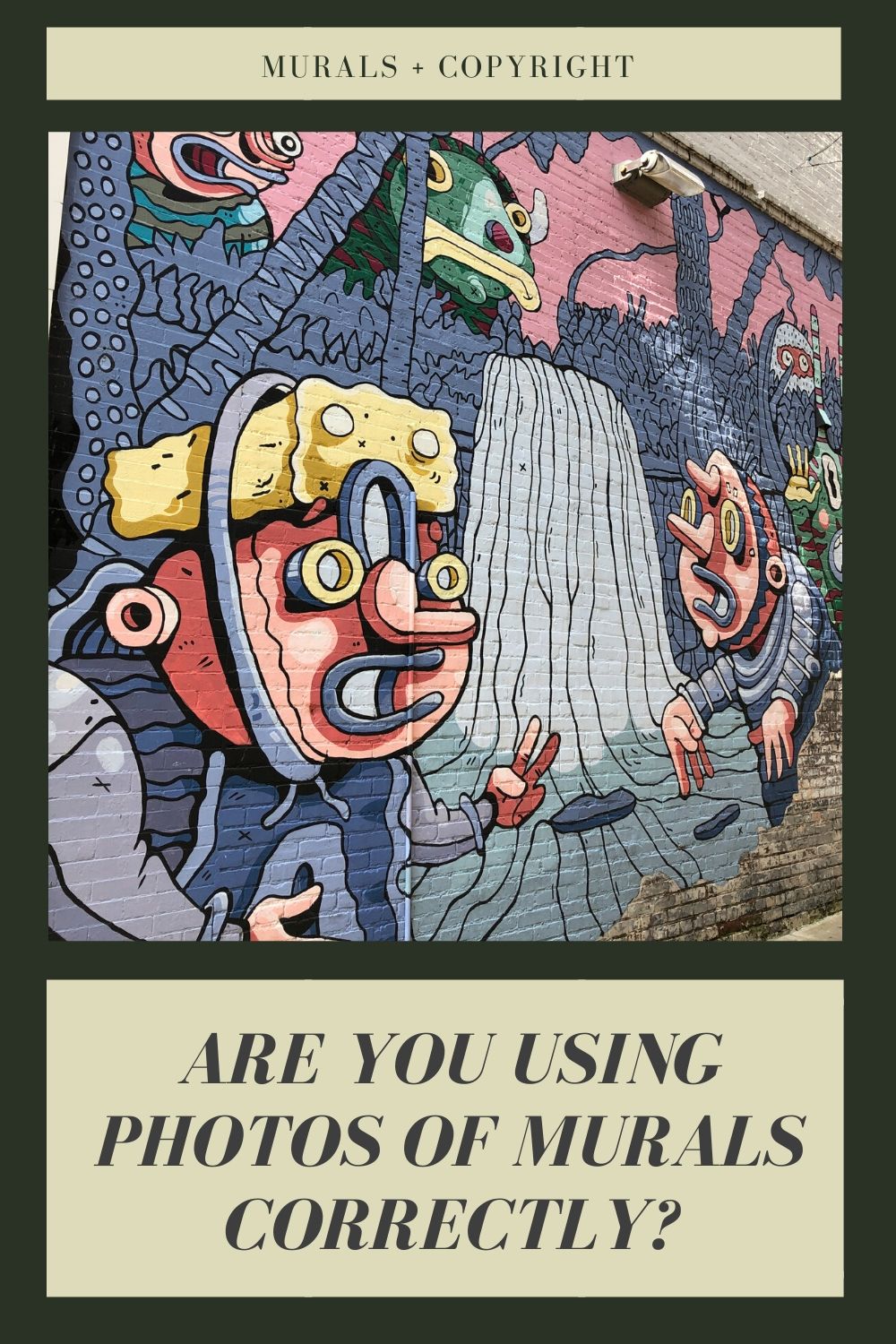
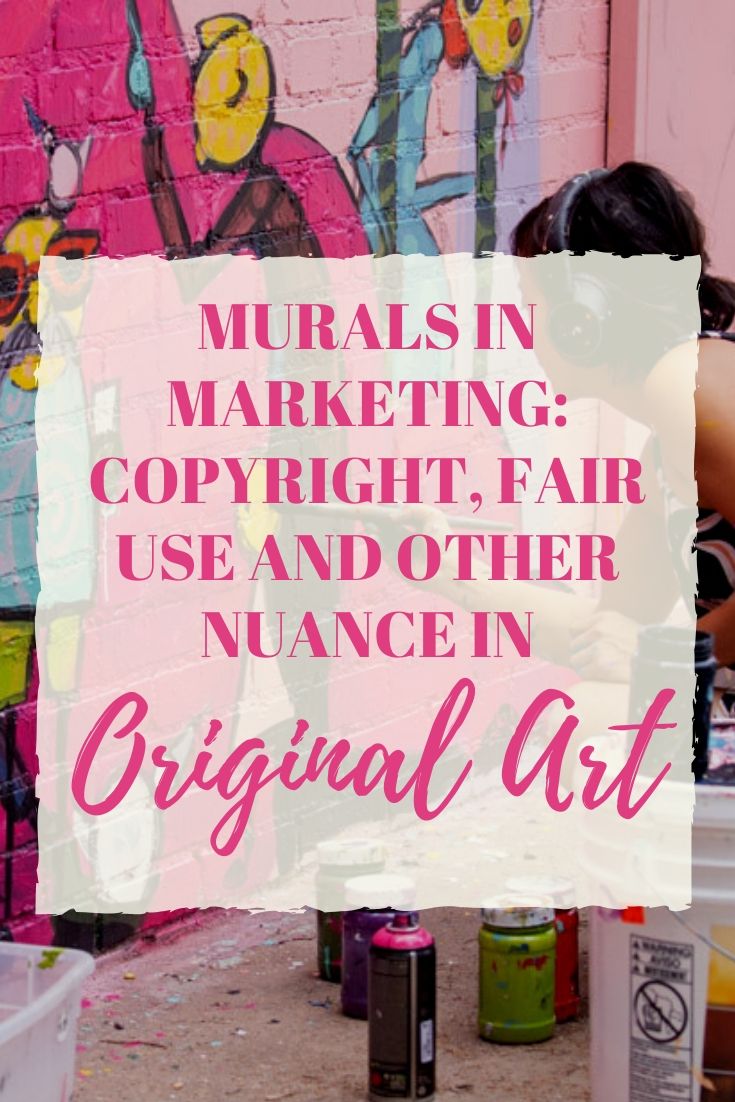
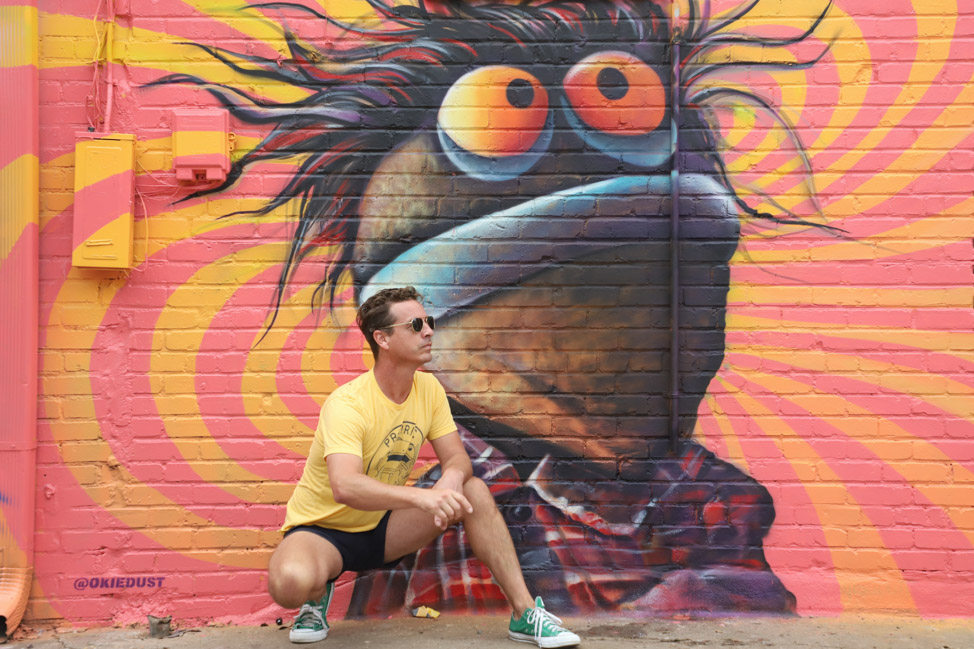
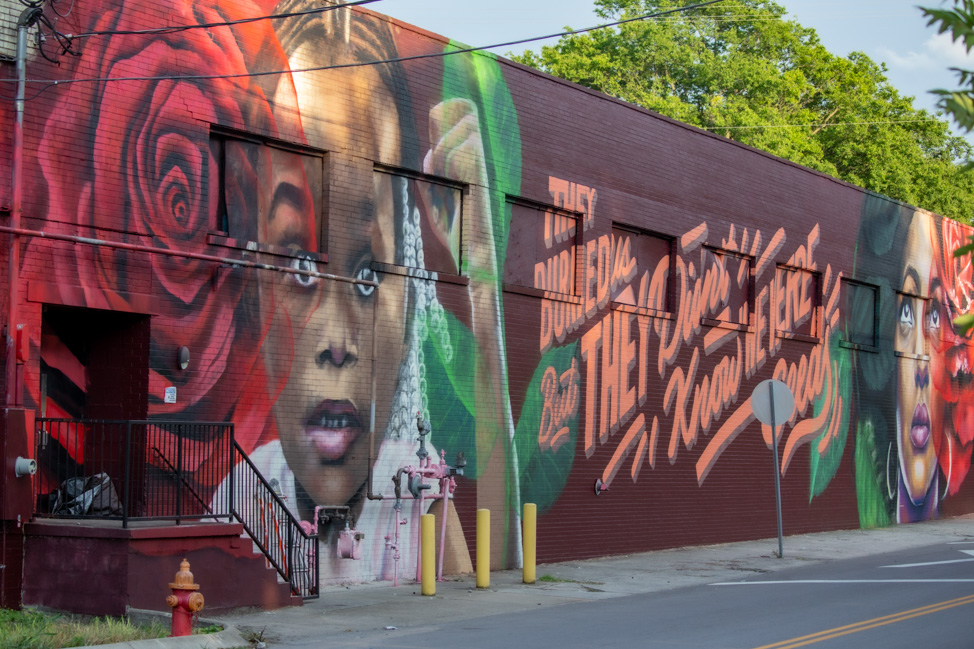
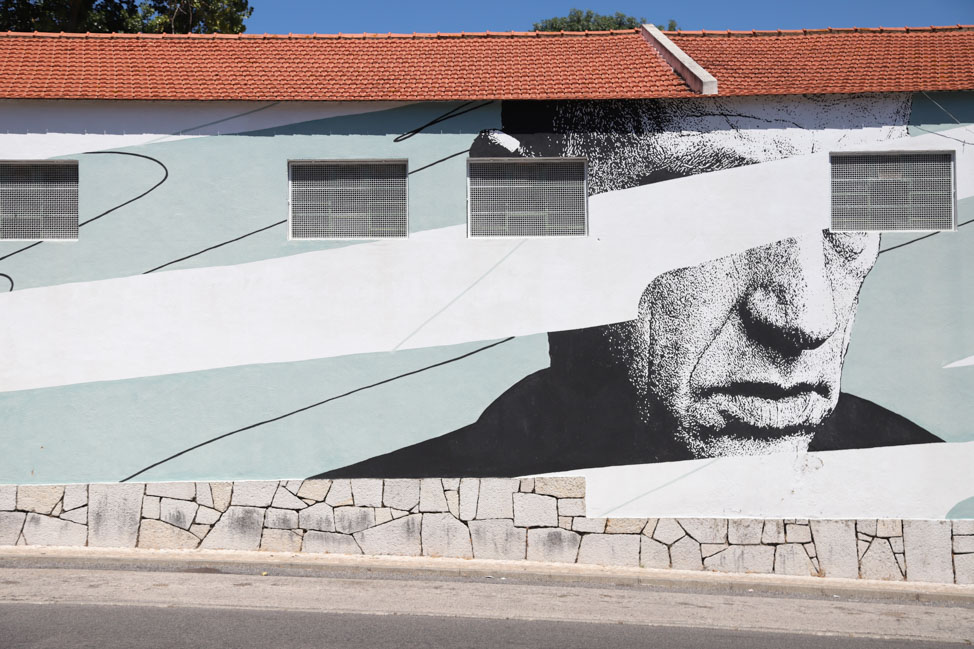












Lots of good info, thanks for sharing it. I have not yet had my mural work used in such a way so this is all good food for thought for the future.